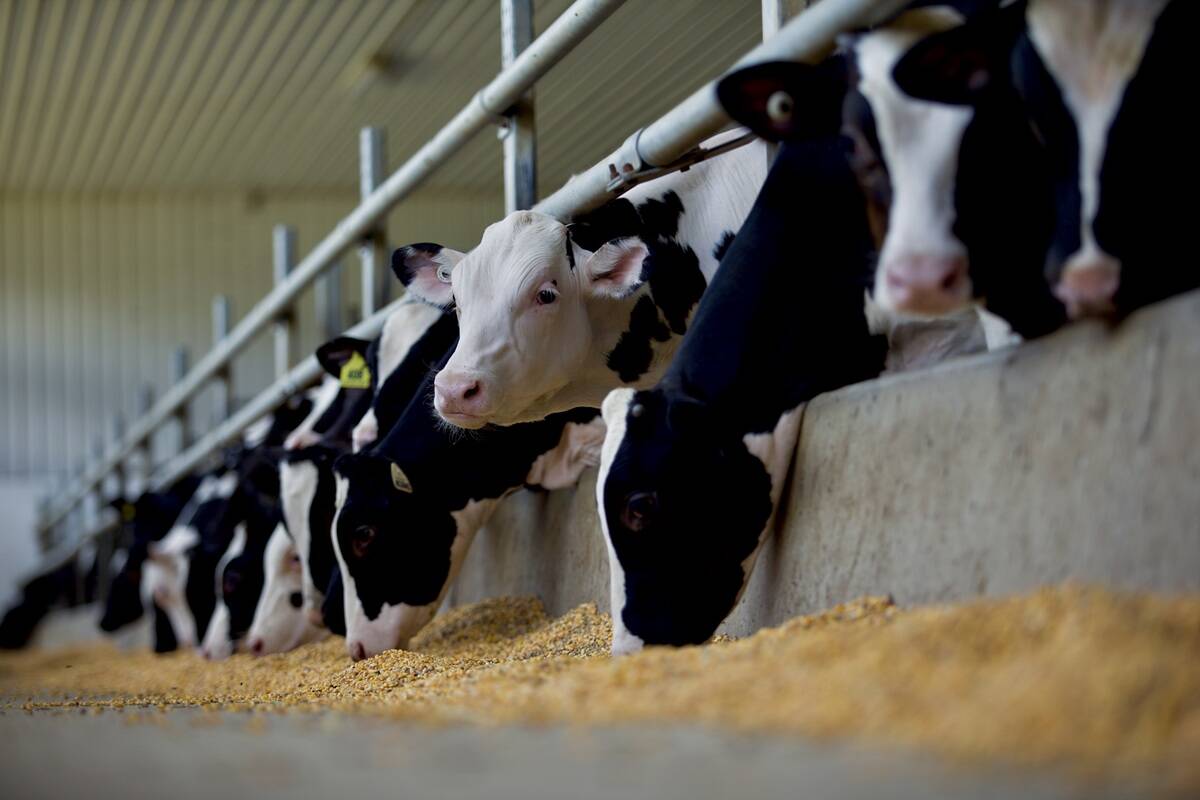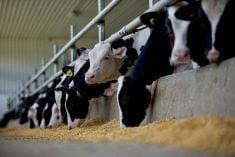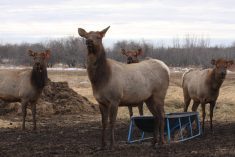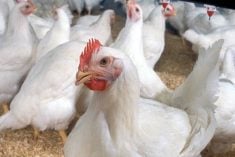MINOT, N.D. — It’s difficult to attend an agricultural meeting in North Dakota without someone praising the virtues of cover crops.
North of the border, planting a cocktail of plants to aid soil fertility and build more resilient soil remains an unorthodox coffee shop topic and a rare on-farm practice.
Scott Day, who was a Manitoba Agriculture crop diversification specialist in Melita before taking a job with a farm investment firm in California last year, said one reason for the difference is American crop insurance programs, which are more lucrative than Canadian policies.
Read Also

Confusion cleared on Canadian calf import changes
A Canadian Food Inspection Agency (CFIA) announcement on import regulations for feeder calves caused some confusion on the administrative side of Canada’s cattle industry earlier this month
“You have a prevent planting program in the U.S. If you’re wet and just don’t plant, you get paid a lot of money,” Day said during a panel discussion on cover crops at the Manitoba-North Dakota Zero Tillage Farmers Association annual meeting in Minot in early January.
“It’s a pretty easy decision to not plant and plant your cover crop (instead)…. (U.S. farmers) also get subsidized to plant cover crops…. That plays a big role whether you’re going to grow a cover crop in a grain farming system.”
As well, Manitoba’s growing conditions are not the same as they are in central North Dakota, where a slightly warmer climate provides an extra week or more for cover crops to develop in the fall.
Day said logistics are also a factor because farmers don’t have the workers to seed a cocktail of radishes and vetches during the harvest crunch.
He said prairie farmers grow thousands of acres of alfalfa, which may provide soil benefits comparable to an exotic cocktail of vetches and black medic. Canadian growers could keep it simple and use alfalfa as a cover crop.
“We know what alfalfa does. We know it kicks out a lot of nitrogen. We know it’s very nutritious and it’s a great rotation crop,” he said.
“We know all the other aspects about it: the weed control, the seed availability, how to seed it…. Sometimes getting back to the basics is important.”
Garry Richards, a farmer from Bangor, Sask., who attended the zero-till meeting in Minot, has seeded cover crops on his farm for the last six years. He could think of only one other farmer in his part of Saskatchewan who is using cover crops.
Richards seeds cover crops in the spring because he doesn’t think it’s feasible to seed crops such as radishes or hairy vetch in the fall.
“If it was me growing cover crops after we harvest, I probably wouldn’t grow them,” said Richards, who is also a pharmacist.
“But if I can grow full length cover crops, seeded at the end of May, and graze them once or twice … then that really works….. You put cattle into that system (cover crops), I think the land improvement benefit just jumps another level.”
Richards said complex practices such as cover crops aren’t appealing when commodity prices are high.
“It’s a higher degree of management. It’s not an easy thing,” he said.
“If (a producer) can make awesome profits from growing wheat and canola and not having to complicate life with anything else, I think a lot of guys have done that.”
Soil scientists and advocates of holistic management often point to farmers around Bismarck, N.D., who pioneered the use of cover crops as the gold standard for such practices.
However, Day said the Bismarck model is based on a mixed farm model.
“Those farms that are talked a lot about … two-thirds of those acres are dedicated to livestock. It’s really easy to put cover crops … into a mixed farming system.”
Jon Stika, a U.S. Department of Agriculture soil scientist in Dickinson, N.D., said that’s because farmers can use the crops to rejuvenate the soil and feed cattle.
“The adoption rate is a lot higher with producers that have livestock because they can always get some of their money grazing those in the fall l… and save the time that they have to feed hay.”
However, he said grain farmers should realize that certain cover crop species are extremely hardy and will persist into November.
“Some of vetches, the clovers, they won’t die until the temperature gets down to 10 F (-12 C),” he said.
“If you look at that, we may have another month (in the fall) where these things could be alive in the soil.”
Stika said farmers should also consider relay cropping, in which crops such as red clover are seeded into an established crop.
“We need to look at getting some of these things established before we harvest,” he said.
“They’re doing more and more of that in the corn belt, where they are broadcasting their cover crop seed into corn or soybean before they harvest.”
Cover crops facts:
Advocates of cover crops, which are used to boost soil health, have a powerful ally in the United States.
Howard Buffett, Warren Buffett’s eldest son, owns farms in Illinois, Arizona and South Africa and is a vocal proponent of sustainable agriculture practices.
Through the Howard G. Buffett Foundation, Buffett focuses his philanthropy on food security, water security, conflict mitigation and a program called harvesting the potential, which promotes conservation agriculture.
Buffett and U.S. agriculture secretary Tom Vilsack will be the opening speakers at a national conference on cover crops and soil health in Omaha, Nebraska, in February.















